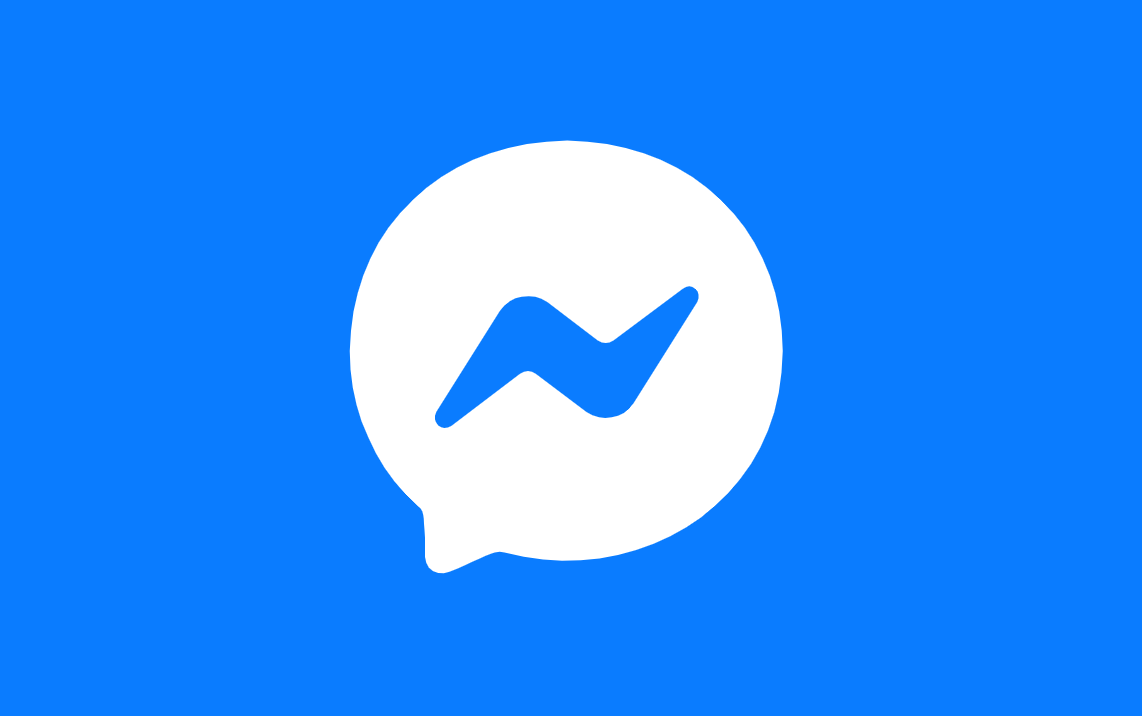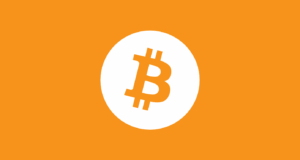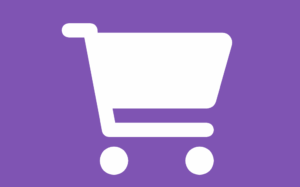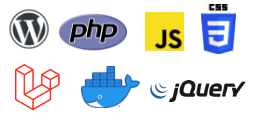Facebook Messenger Chat for WordPress: Simple Setup with Floating Awesome Button
Introduction: Unlock Instant Communication on Your WordPress Site
In today’s digital world, customers expect quick responses. Whether they need support, have questions, or want to make a purchase, waiting for answers isn’t an option. Real-time communication has become a must for any website aiming to keep visitors happy and engaged.
Traditional contact methods, like email and forms, are becoming outdated, often leaving customers frustrated with slow, impersonal responses. This delay can harm your user experience and result in lost opportunities.
If you want to keep your visitors engaged and boost conversions, it’s time to ditch the slow methods and embrace real-time communication. One of the easiest ways to do this is by adding a floating Facebook Messenger button to your WordPress site. This simple tool offers immediate, familiar interaction, allowing customers to reach you without interrupting their browsing experience. With the button always visible, users can get in touch whenever they need, improving satisfaction and trust.
The best way to achieve this integration is with the Floating Awesome Button (FAB) plugin. FAB makes it incredibly easy to add a floating chat button to your WordPress site, offering a seamless Messenger experience for your visitors. It’s the best WordPress floating button plugin for boosting engagement and simplifying customer communication.
In this article, we’ll show you how FAB’s Facebook Messenger integration works and why it’s a game-changer for your website. You’ll learn why real-time communication is so crucial, how to set up Messenger with FAB, and how this simple feature can increase interaction with your site.
Whether you’re a business owner, blogger, or service provider, this guide will help you easily set up Messenger on your WordPress site, bringing immediate, real-time engagement to your visitors.
Facebook Messenger: The Key to Seamless Connection Hub

Among the many messaging apps available, Facebook Messenger remains one of the most popular platforms for online communication. Originally launched in 2008 as part of Facebook and later developed into a standalone app, Messenger has become more than just a chat tool. It’s now a hub for messaging, video calls, customer service, and business communication.
What is Facebook Messenger?
Facebook Messenger is a free messaging application developed by Meta (formerly Facebook). It allows users to send text messages, photos, videos, voice notes, and files to individuals or groups. Available on iOS, Android, and desktop, Messenger is one of the best instant messaging apps worldwide.
Unlike traditional SMS, Messenger works over the internet. This means you only need mobile data or Wi-Fi to stay connected, making it a cost-effective solution for global communication.
What is Facebook Messenger Used For?
Messenger is designed to make online communication faster, easier, and more interactive. Here are the key uses of Facebook Messenger:
- Personal Communication
Chat with friends and family
Send emojis, stickers, GIFs, and multimedia
Share voice messages and files - Voice and Video Calls
Free video calling app features
One-on-one or group calls
Messenger Rooms for large group video chats - Business and Customer Service
Facebook Messenger for business helps companies connect with customers
Automated responses via chatbots
Share promotions, order updates, or provide customer support - Social & Entertainment Features
Play games inside Messenger
Share Stories similar to Instagram and WhatsApp
Integration with music, payments, and third-party apps
How Does Facebook Messenger Work?
Messenger works by connecting users through Meta’s messaging platform across mobile and desktop devices. Here’s how it functions:
- User Account Integration
Login with your Facebook account or just a phone number.
Sync contacts and connect instantly with friends. - Message Transmission
Messages are sent over the internet with end-to-end encryption in secret conversations.
Instant delivery across devices using cloud storage. - Features in Action
Instant messaging for text, voice, and video
Free voice and video calls worldwide using VoIP
Messenger for business with chatbot and customer support integration - Cross-Platform Support
Works seamlessly on smartphones, tablets, and desktops.
Conversations stay synced across devices.
Facebook Messenger is more than just a messaging app — it’s a complete online communication platform. Whether you want to stay in touch with friends, make free international video calls, or use Messenger for business to connect with customers, the app offers versatile features that make digital interaction seamless.
By understanding what Facebook Messenger is, what it is used for, and how it works, you can maximize the benefits of this powerful messaging platform.
The Evolution of Customer Connection
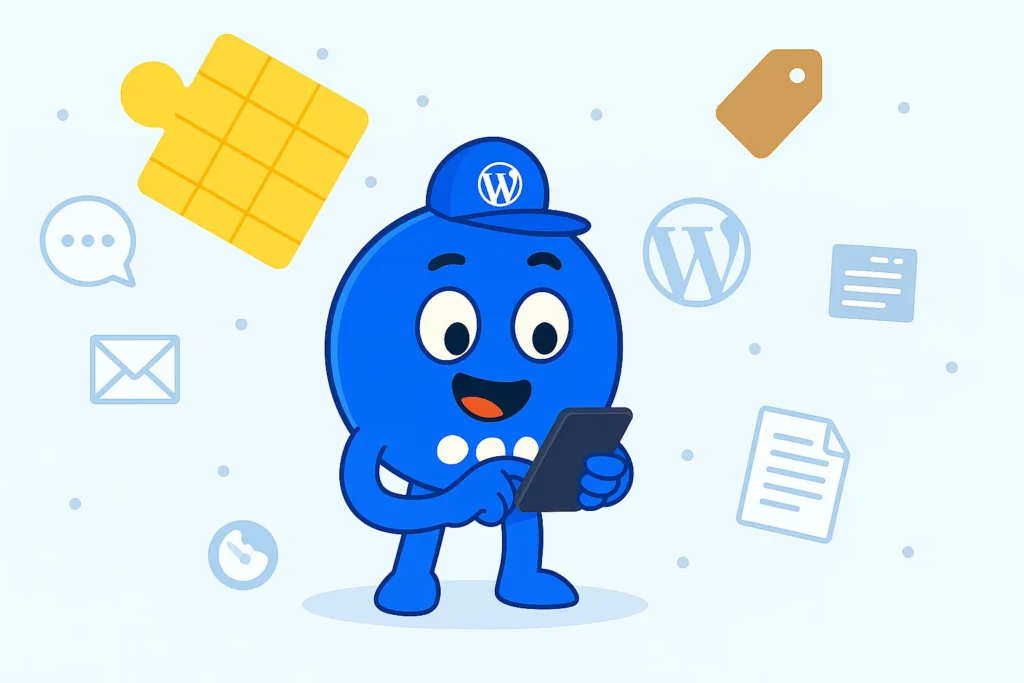
The way businesses connect with their customers has changed dramatically over the years. As technology advances and customer expectations rise, traditional methods like email and contact forms are no longer enough. Real-time communication, especially through platforms like Facebook Messenger, has taken center stage in the modern customer service experience.
From Simple Chat to Business Powerhouse
In the early days of the internet, customer service was largely reliant on static FAQ pages, email responses, and contact forms—methods that, while functional, often led to long wait times and impersonal interactions. As digital experiences improved, so did the expectations of customers.
Fast forward to today, and instant messaging has become the new standard for communication. With the rise of social media, Facebook Messenger has evolved from a simple chatting app into one of the most powerful tools for real-time customer engagement.
Statistically, Facebook Messenger is one of the most widely used platforms for communication, with over 1.3 billion active monthly users worldwide. In fact, 40 million businesses now use Messenger to connect with their customers, highlighting the platform’s significant role in business communications. These numbers reflect how integral Messenger has become in shaping modern customer support, sales, and engagement strategies.
Why Businesses Embraced Messenger
Businesses quickly embraced Messenger for its clear advantages over traditional communication methods. One of the biggest benefits is the speed of communication.
According to a 2019 survey by HubSpot, 82% of consumers expect an immediate response when reaching out for customer support.
Messenger provides a channel that allows businesses to offer that instant communication, meeting customer expectations without delay.
Moreover, Messenger’s familiarity makes it easy for customers to use. As a platform many are already comfortable with, customers are more likely to engage with a business through Messenger than through an unfamiliar form or contact method. This ease of use, combined with its real-time nature, makes it a preferred choice for businesses looking to improve customer interaction.
Messenger also offers the benefit of automation, allowing businesses to integrate chatbots that handle basic queries.
According to Drift’s 2020 State of Conversational Marketing Report, 53% of customers expect businesses to offer messaging as a customer service channel.
Furthermore, chatbots allow businesses to provide 24/7 support without needing additional staff, improving efficiency and ensuring that customer queries are never left unanswered.
The Rise of Customer Chat Plugins
As businesses sought easier ways to integrate real-time communication on their websites, customer chat plugins quickly became a solution. These plugins make it possible to add messaging platforms—like Facebook Messenger—directly into a website, creating an immediate, interactive channel for customers.
According to Zendesk’s 2021 Customer Service and Experience Trends Report, 67% of customers prefer to use live chat over other forms of communication.
This statistic shows the growing demand for instant communication. However, many of the chat plugins available require a certain level of technical expertise to install and configure, which can be daunting for website owners who don’t have coding skills.
That’s where the Floating Awesome Button (FAB) plugin comes in. FAB simplifies the process, allowing anyone to easily integrate a floating Facebook Messenger button on their WordPress site without needing any technical knowledge. This makes real-time communication accessible to all business owners, whether they’re tech-savvy or not.
Why Real-Time Communication is Crucial for Website Engagement
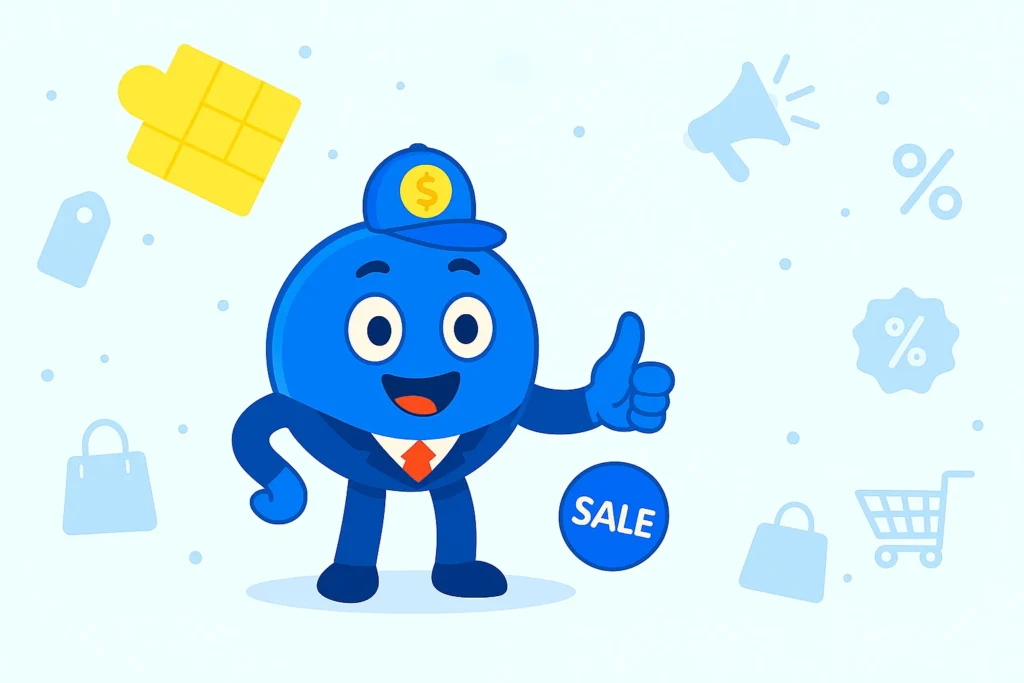
In today’s fast-paced digital world, real-time communication has evolved from being a mere convenience to a critical component of a successful website strategy. Customers demand instant responses, and offering real-time chat has become one of the most effective ways to boost engagement, improve customer satisfaction, and increase conversion rates.
Let’s dive deeper into why real-time communication is crucial for website success, highlighting the benefits and backed by key facts, stats, and actionable insights.
1. Instant Gratification for Customers
In an age where information is only a click away, customers increasingly expect immediate answers. Instant gratification has become the norm, with people accustomed to quick responses on digital platforms.
According to Zendesk, 42% of customers expect a response within 60 minutes, and 32% expect one within 30 minutes.
These expectations are not just about convenience—they’re tied to consumer behavior and satisfaction. Delays in communication can cause frustration and lead to visitors abandoning your site without taking action, whether it’s completing a purchase or filling out a contact form.
By providing real-time communication through Facebook Messenger via the Floating Awesome Button (FAB), businesses can meet these growing expectations and ensure that visitors are engaged right at the moment they need assistance.
This instant interaction not only retains customers but also keeps them interested, making it easier for them to proceed with their goals on your site—be it purchasing a product, subscribing to a newsletter, or learning more about your services.
2. Increased Conversion Rates
Real-time communication isn’t just about solving problems; it’s also about turning visitors into customers. Studies show that real-time chat has a direct and measurable impact on conversion rates.
According to Forrester, 44% of online consumers say that having their questions answered by a live person during an online purchase is a key factor in their decision-making process.
This highlights the importance of providing live chat on your website—when customers can easily connect with a live representative, they are more likely to proceed with their purchase or inquiry.
Moreover, a LiveChat report reveals that 38% of consumers are more likely to make a purchase after interacting with a customer service agent via live chat. Similarly, Comm100 found that businesses using live chat see an average 48% increase in revenue per chat.
This demonstrates that integrating FAB’s Facebook Messenger button on your website can directly influence your sales and conversion rates, offering a clear path for turning interactions into business opportunities.
3. Improved Customer Satisfaction and Trust
Real-time communication is also about building trust and loyalty. When customers reach out and get immediate help, it significantly improves their experience.
A survey from J.D. Power shows that 42% of online consumers prefer live chat over other communication methods, including email (23%) and social media (14%).
When customers get their queries answered instantly, it fosters a sense of security and reliability, enhancing their overall satisfaction.
Furthermore, 79% of customers stated that a quick resolution to their issues makes them more likely to return to a business.
The FAB Facebook Messenger button ensures that your customers feel heard and valued, increasing their likelihood of coming back. Trust built through real-time support can lead to repeat business, positive word-of-mouth referrals, and a strong reputation in your industry.
4. Enhanced User Experience
Offering real-time communication through FAB’s Facebook Messenger button enhances the user experience on your website.
Research by HubSpot found that 82% of consumers expect an immediate response to their inquiries, and 71% feel frustrated when they don’t receive it.
Real-time support doesn’t just solve problems—it transforms the browsing experience into a more engaging and interactive journey.
In fact, Crazy Egg reports that 35% of visitors who engage with live chat stay longer on the site. This reduces the likelihood of visitors leaving without interacting and provides them with the assistance they need in real-time.
By offering instant access to help or information, you smooth out the user journey, reduce bounce rates, and keep visitors on your site longer, leading to a higher likelihood of conversions.
5. Stand Out in a Competitive Market
In the highly competitive digital marketplace, offering real-time communication gives you a distinct competitive advantage.
According to HubSpot, 90% of customers say an immediate response from a business is essential when they have a customer service question.
By integrating FAB’s Facebook Messenger button, you distinguish your brand from competitors who might still rely on slower communication methods like email or phone calls.
Business leaders who implement live chat tools report significant improvements in engagement and sales opportunities. LiveChat found that companies using live chat see a 40% increase in sales opportunities. This indicates that real-time communication doesn’t just enhance customer support—it drives business growth. FAB empowers your website to stand out by offering instant communication, increasing both the number of customer interactions and business opportunities.
By incorporating FAB’s Facebook Messenger button into your WordPress site, you’re not just providing customer support—you’re creating a dynamic, interactive, and responsive experience for your visitors. This simple yet powerful integration can help increase conversions, improve customer satisfaction, and position your business for success in today’s competitive digital market. With real-time communication, your website becomes a more engaging and effective tool in turning visitors into loyal customers.
Introducing Floating Awesome Button (FAB): Your Go-To Plugin

When it comes to enhancing your website’s user experience and boosting engagement, few tools can match the simplicity and effectiveness of Floating Awesome Button (FAB).
This powerful WordPress plugin allows you to add floating action buttons to your website, enabling your visitors to interact with your content and get in touch with you seamlessly. Whether it’s to ask a question, contact support, or take a specific action, FAB makes it easy to integrate these features with just a few clicks.
What is FAB Plugin?
Floating Awesome Button (FAB) is a versatile WordPress plugin that adds customizable floating buttons to your website. These buttons can serve multiple purposes—ranging from contact buttons, to links, to embedded chat features like Facebook Messenger. The beauty of FAB lies in its simplicity and flexibility: it doesn’t require any coding knowledge, so even beginners can set it up with ease.
What sets FAB apart is its ability to stay visible as users scroll down your page. Whether they’re browsing your products, reading a blog post, or filling out a form, the FAB button remains persistent—offering instant access to the features you want to promote. This ensures that your visitors always have a way to connect with you or take action, without losing focus on the content they’re engaging with.
Key Features of FAB
- Customizable Floating Buttons
Fully customizable buttons with adjustable designs, colors, sizes, and positions to fit your site’s branding and style. - Popups
Use popups to display important announcements, promotions, or reminders. These attention-grabbing elements help engage visitors without overwhelming them. - Toast Notifications
Add toast notifications for brief, non-intrusive alerts, such as form submissions or order confirmations, to keep users informed without disrupting their browsing experience. - Multiple Action Options
You can add several floating buttons at once, including Facebook Messenger integration for customer support, scroll-to-top buttons, and call-to-action buttons. - Location Rules
Control where buttons and notifications appear, targeting specific pages or sections for optimal engagement. - User-Friendly Interface
Easy setup with no coding required, making it accessible for all skill levels. - Responsive Design
FAB’s buttons are mobile-optimized, ensuring a seamless experience across all devices.
These features enhance your site’s interactivity, driving customer engagement and boosting conversions with minimal effort.
Why FAB’s Facebook Messenger Button Simplifies Customer Support
One of the standout features of FAB is its Facebook Messenger button, which allows businesses to integrate real-time communication directly into their WordPress websites. Here’s how it simplifies customer support:
- Instant Communication
By adding the Facebook Messenger button through FAB, your customers can easily reach out to you without leaving your website. This provides instant access to support, allowing you to assist with queries, troubleshoot issues, or guide customers in real-time. - Seamless Integration
FAB allows you to connect your Facebook page to the plugin with just a few simple steps. Once connected, the Messenger button will work seamlessly, letting visitors send messages directly to your Messenger inbox. This makes it simple for you to track and respond to customer inquiries. - Increased Accessibility
Whether visitors are shopping for products, reading blog posts, or exploring services, the Messenger button remains easily accessible, encouraging more customers to reach out without disrupting their browsing experience. - No Technical Knowledge Needed
Unlike other customer chat tools that require complex configurations or coding, FAB’s integration with Facebook Messenger is easy to set up. All you need to do is install the plugin, link your Facebook page, and customize your button to fit your site’s design. - Multi-Platform Engagement
Since Facebook Messenger is one of the most widely used messaging platforms, customers are already familiar with its interface. This familiarity boosts comfort and increases the chances of engagement. With FAB, you’re not only providing a powerful support tool, but you’re also integrating it into a platform your customers already trust.
By adding the FAB Facebook Messenger button to your WordPress site, you can take real-time communication to the next level. It’s a simple yet powerful solution for improving customer service, increasing engagement, and boosting conversion rates—without the need for complex setups or coding.
Whether you’re offering instant support, guiding visitors through the buying process, or simply answering questions, FAB ensures that your customers always have a way to connect with you—keeping them engaged and satisfied throughout their entire journey.
Step-by-Step Guide: How to Integrate Facebook Messenger Chat with FAB

Looking to enhance communication on your WordPress site and provide instant customer support? With the Floating Awesome Button (FAB) plugin, you can easily add a Facebook Messenger Button that allows visitors to contact you directly through Messenger—no coding required!
Follow these simple steps to seamlessly integrate the Facebook Messenger Button into your site.
1. Install the FAB Plugin
Start by installing the Floating Awesome Button plugin:
- Log into your WordPress Dashboard.
- Navigate to Plugins > Add New.
- Search for “Floating Awesome Button.”
- Click Install, then Activate to enable the plugin.
2. Create a New Facebook Messenger Button
Set up a button that links directly to your Facebook Messenger:
- Go to the FAB section in your dashboard and select Add New FAB.
- From the available options, choose the Facebook Messenger Button to create your contact button.
3. Connect Your Facebook Page
Link your FAB button to your Facebook Messenger:
- In the FAB settings, enter your Facebook page URL to connect your Messenger account.
- Once connected, the Messenger Button will link directly to your Facebook page’s Messenger inbox, allowing visitors to start chatting with you instantly.
In the Button Text field, write a compelling call-to-action, such as:
- “Contact Us”
- “Get in Touch”
- “Chat With Us via Messenger”
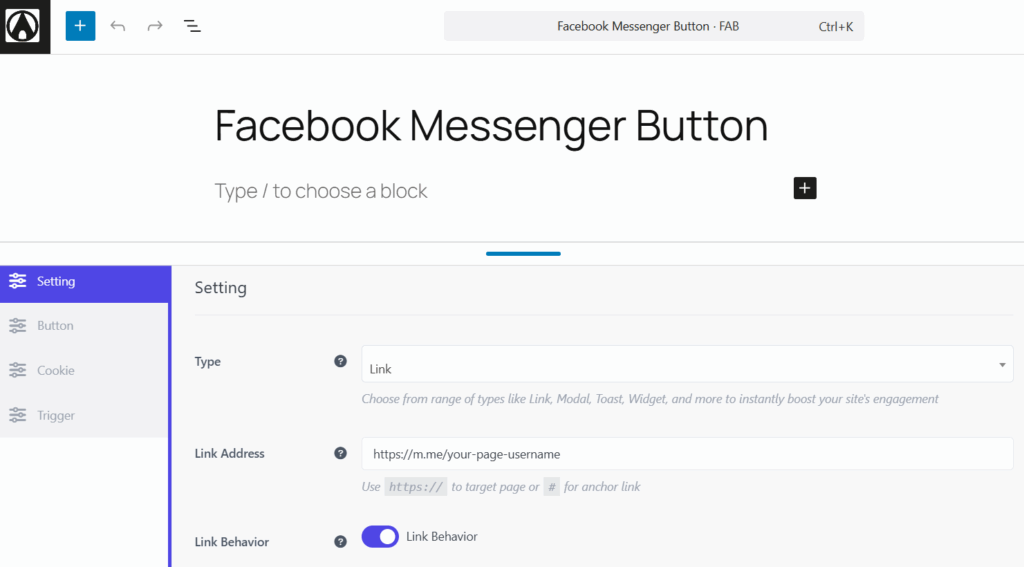
4. Customize Your Button Appearance
Make your button visually appealing and on-brand:
- Choose a button color that stands out but complements your website’s design.
- Select an icon (such as the Facebook Messenger logo) to clearly communicate the action of messaging.
- Set the button position, commonly bottom-right, for optimal visibility.
- Enable responsive design to ensure the button displays perfectly on all devices.
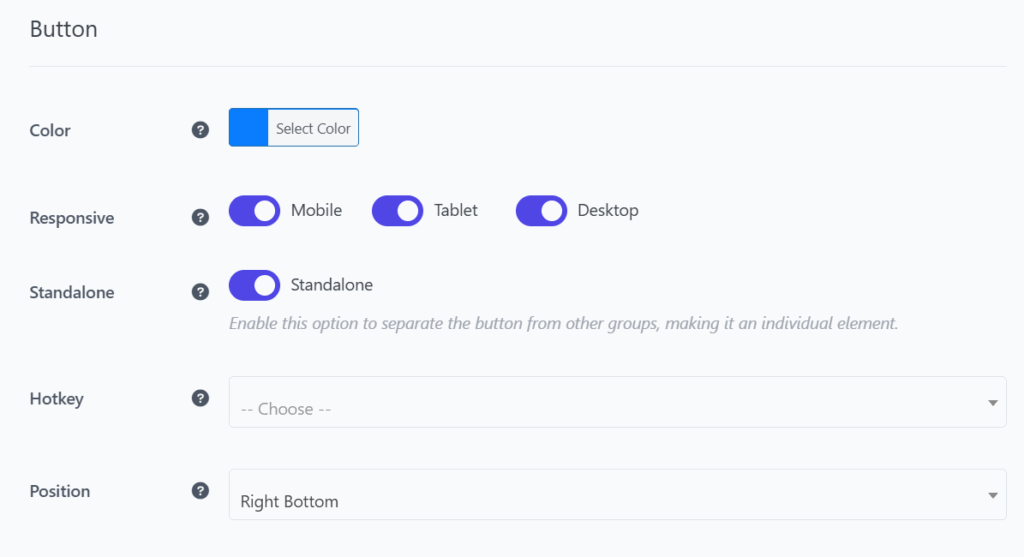
5. Add an Eye-Catching Icon
Pick a visual element that immediately communicates “Message us on Facebook”:
- Browse FAB’s icon library (with over 1500+ options).
- Choose an icon, such as the Facebook Messenger logo or a chat bubble.
- Pick an icon color that contrasts well with the button background for maximum clarity.
6. Create an Enticing Tooltip
Customize the text that appears when users hover over your button:
- Enable Always Display to keep the tooltip visible, or set a Countdown Timer to control when the tooltip appears.
- Choose a font color that’s easy to read and matches your site’s style.
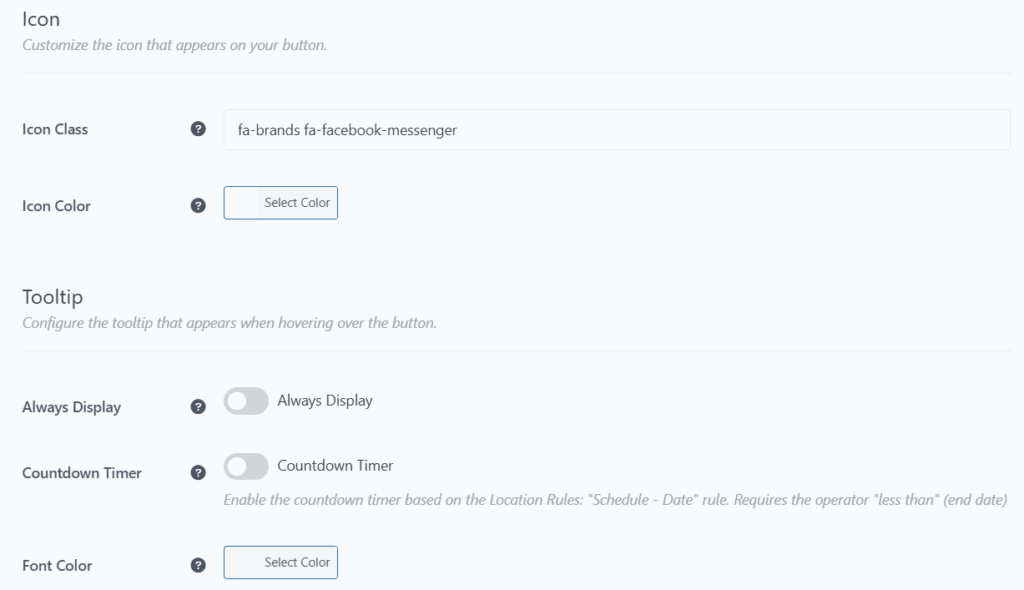
7. Control When and Where the Button Appears
Maximize relevance and minimize clutter by controlling when and where the Messenger button appears:
- Time Rules – Show the button during key hours (e.g., business hours).
- Day Rules – Display the button only on weekdays, weekends, or during special events.
- Date Range – Useful for limited-time promotions or campaigns.
- Page Rules – Show the button only on relevant content or specific pages (e.g., product pages or checkout).
- Post Type – Display the button on specific post types.
- Specific Page – Set the button to show only on specific pages
- Conditional Display – Target specific audiences, like logged-in users or subscribers.
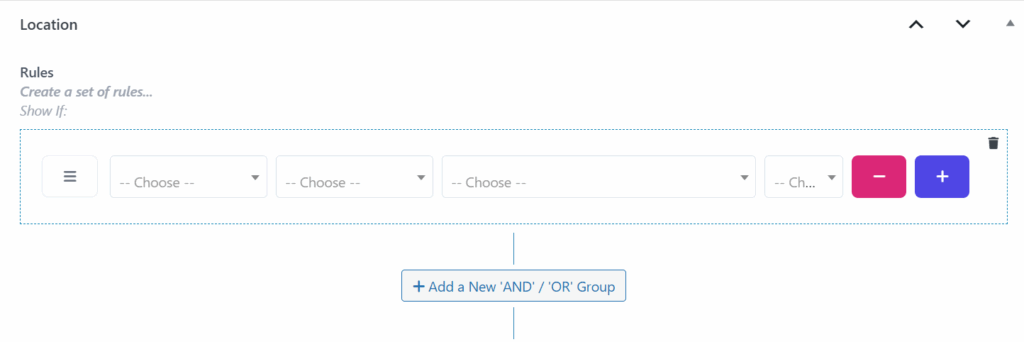
8. Save, Test, and Launch
Once you’ve configured your Facebook Messenger Button:
- Click Save to apply the settings.
- Preview your site on both desktop and mobile to ensure it looks and works perfectly.
- Test the button to confirm it links to the correct Facebook Messenger account and functions as intended.
- Make any necessary adjustments to styling or rules.
By adding a FAB Facebook Messenger Button to your WordPress site, you create an interactive communication channel that makes it easier for visitors to get in touch instantly. This simple enhancement allows you to offer real-time support, engage visitors, and improve customer satisfaction—without any complicated setup!
Case Studies: How FAB’s Facebook Messenger Button Boosts Customer Interaction
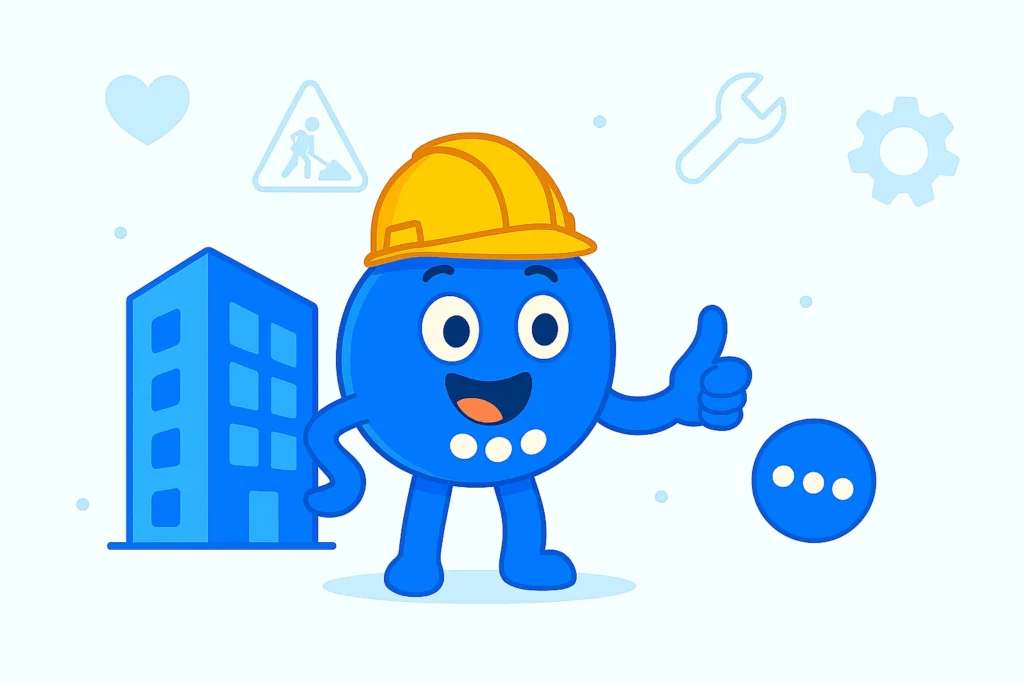
Integrating FAB’s Facebook Messenger Button into your website can have a transformative impact on customer interaction, driving higher engagement, increased conversions, and improved customer satisfaction.
Below are some illustrative examples that show how businesses can benefit from real-time communication through FAB’s Messenger button, backed by proven facts.
1. E-commerce Store Success
Challenge: High cart abandonment, slow response times.
- Cart abandonment remains a significant challenge for e-commerce businesses, with the average cart abandonment rate sitting at 69.57% (Baymard Institute).
- Slow response times to customer inquiries regarding products, delivery, or payment options contribute heavily to this issue, as customers abandon their purchases when questions go unanswered.
Solution: Implemented FAB’s Messenger button.
- The store integrated FAB’s Facebook Messenger Button to offer instant communication with customers.
- By providing real-time answers to product questions, shipping concerns, and checkout queries, the store improved customer engagement during critical stages of the purchasing process.
Result: 32% increase in customer inquiries, 15% improvement in checkout completion rates, and 12% boost in revenue.
- After integrating the Messenger button, the store saw a 32% increase in customer inquiries. Customers were able to get answers instantly, which helped them move through the purchasing process.
- As a result, the store observed a 15% improvement in checkout completion rates and an overall 12% boost in revenue.
- HubSpot reports that 78% of customers prefer a business that offers real-time communication, leading to higher satisfaction and retention rates.
2. Service-Based Business Triumph
Challenge: Limited lead generation, fragmented communication.
- A service-based business faced challenges with lead generation and fragmented communication.
- Prospects found it difficult to reach out and often received delayed responses, leading to lost opportunities and lower-quality leads.
Solution: Used FAB to offer direct Messenger contact.
- The service provider added FAB’s Messenger button to provide a direct communication channel with visitors, allowing potential clients to ask questions, request quotes, and schedule appointments without delay.
Result: 50% increase in leads, 45% reduction in response time, and 38% improvement in conversion rates.
- After integrating the Messenger button, the business saw a 50% increase in leads due to the real-time communication that allowed prospects to get answers quickly.
- The response time was reduced by 45%, leading to higher customer satisfaction.
- As a result, the business experienced a 38% improvement in conversion rates.
- According to Salesforce, 69% of consumers are more likely to make a purchase if they can get answers in real time.
3. Content Creator/Blogger Engagement
Challenge: Passive audience, difficulty getting direct feedback.
- Content creators and bloggers often struggle with maintaining an active audience that engages beyond just consuming content.
- Gathering direct feedback to understand what resonates with readers is challenging without clear channels of communication.
Solution: Added FAB’s Messenger button for community engagement.
- The content creator added FAB’s Facebook Messenger Button to facilitate direct communication with their readers.
- Visitors could send feedback, suggest new topics, or ask questions about the content, fostering a two-way conversation between the creator and their audience.
Result: 55% increase in reader interactions, 70% increase in content suggestions, and a stronger sense of community.
- The Messenger button led to a 55% increase in reader interactions, including more direct questions and suggestions for future posts. This feedback loop made the content more engaging and relevant, while also fostering a stronger sense of community among readers.
- According to Social Media Examiner, 83% of customers are more likely to engage with a brand that offers personalized communication, which was reflected in the creator’s growing loyal audience.
Potential Impact of FAB’s Messenger Button
These illustrative examples highlight the substantial impact FAB’s Facebook Messenger Button can have across various industries:
- For e-commerce stores, integrating real-time chat leads to higher customer engagement, reduced cart abandonment, and improved conversion rates.
- For service-based businesses, instant communication through Messenger helps qualify leads more efficiently, improves customer satisfaction, and boosts overall conversion rates.
- For content creators and bloggers, the Messenger button fosters a stronger sense of community, improves audience engagement, and makes it easier to gather valuable direct feedback.
The Messenger button allows businesses to offer personalized support, build customer loyalty, and drive higher conversions. By leveraging real-time communication, businesses can meet the growing demand for instant responses and enhance the overall user experience, leading to sustained growth and a stronger brand presence in today’s competitive marketplace.
Tips to Optimize Facebook Messenger Integration for Better Engagement with FAB
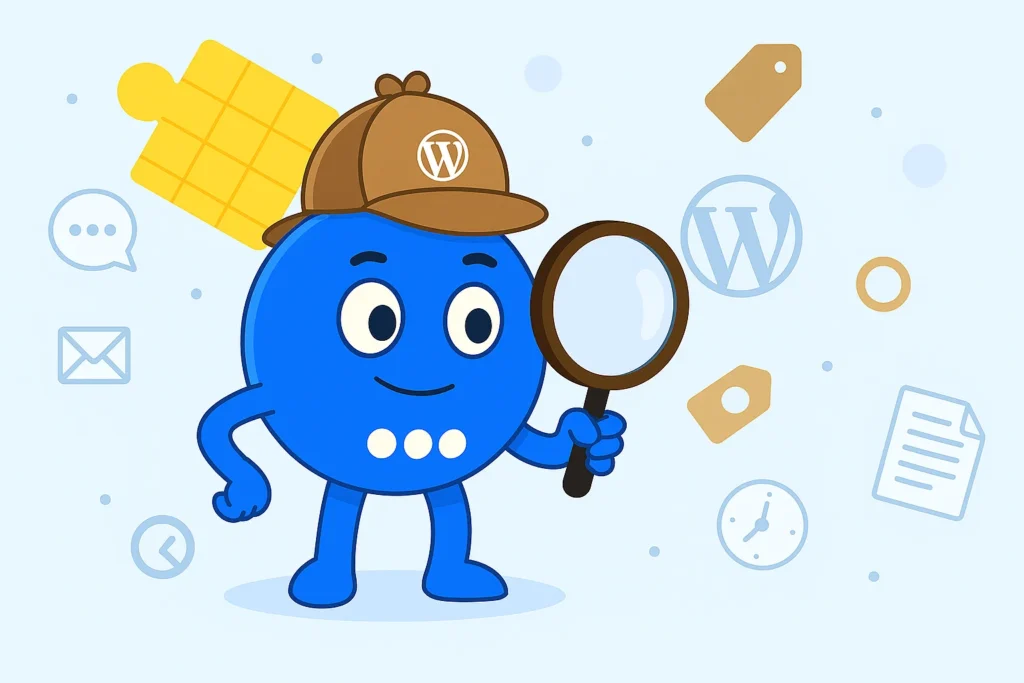
To fully leverage FAB’s Facebook Messenger Button, it’s essential to adopt effective strategies that enhance customer experience, improve engagement, and streamline communication. Here are some actionable tips for businesses to make the most of Messenger integration.
1. Manage Expectations: Clearly Set Availability Hours or Use Automated Away Messages
Customers often expect instant replies 24/7, which can be difficult to deliver consistently. When businesses fail to provide timely responses, it can lead to customer frustration and dissatisfaction, especially for those who expect immediate assistance outside of business hours.
Solution:
- To manage expectations, clearly define your availability hours and inform customers when they can expect a response.
- Use automated away messages to let visitors know that your team is unavailable but will reply during your regular business hours. This transparency helps to maintain trust and reduces frustration when responses aren’t instant.
- Tip: You can set up Facebook Messenger’s away message feature to automatically inform customers when your team is offline.
For example, you might say, “We’re currently offline, but we’ll get back to you as soon as we’re available!” This ensures that users are not left wondering when to expect a reply.
Clear communication about your availability sets realistic expectations, making it easier for your team to manage inquiries and for customers to feel acknowledged, even if they can’t reach a live agent right away.
2. Leverage Messenger’s Automation: Utilize Quick Replies, FAQs, and Basic Chatbots for Efficiency
Handling a large volume of inquiries, especially for businesses that operate in sectors like e-commerce, services, or support, can overwhelm your team. Customers often ask similar questions, leading to repetitive tasks for support agents and slower response times.
Solution:
- Messenger automation features such as quick replies, frequently asked questions (FAQs), and basic chatbots can help streamline communication.
By automating responses for common inquiries (like store hours or order status), you save valuable time and ensure your team can focus on more complex, high-priority issues. - Quick Replies: Set up quick replies for standard questions like “What are your business hours?” or “Where is my order?” so visitors can get answers instantly without waiting.
- Chatbots: Implement chatbots to manage initial inquiries, gather customer information, and qualify leads before handing them over to a live agent.
This will help automate basic interactions and improve the speed and efficiency of your customer support process.
Using automation for common inquiries can drastically reduce response times, provide instant answers, and create a more efficient workflow for your team.
3. Respond Promptly: Emphasize the “Real-Time” Aspect by Ensuring Timely Human Follow-Up
While automation handles basic inquiries, human follow-up is essential for providing personalized support and addressing more complex concerns. Even with automated responses, customers expect real-time human communication for issues that require in-depth assistance.
Solution:
- Emphasize human engagement by ensuring prompt, real-time responses for more intricate inquiries. Make it clear to your customers that you’re available for a deeper conversation when needed.
- Utilize Facebook’s “response time” feature to track how quickly your team responds to messages, ensuring you’re meeting customer expectations.
- Tip: Use timely follow-up strategies to build trust. For instance, if a chatbot addresses a customer’s query, the team can follow up within a few minutes to offer more detailed help. This human touch makes customers feel valued and enhances customer satisfaction.
By ensuring quick follow-ups for more personalized interactions, you foster customer trust and improve loyalty. Real-time support reflects professionalism and builds lasting relationships with your audience.
4. Promote Awareness: Inform Visitors That the Messenger Option Is Available
Visitors might not immediately notice the Messenger button or be aware that they can chat instantly with your team, reducing the button’s effectiveness and limiting its use.
Solution:
- Proactively promote the availability of the Messenger button across your website to ensure customers know it’s there for them.
- Use calls to action (CTAs) on key pages, like product pages, checkout pages, or the homepage, informing visitors that they can get help in real time.
- Tip: Consider using pop-ups or banner notifications that introduce the Messenger chat option when visitors need assistance, such as when they linger on a page or show signs of hesitation.
You can also include a simple message like “Need Help? Chat with Us Now” to encourage engagement.
By actively promoting Messenger, you increase its visibility and usage, ensuring customers know they can quickly connect with you for assistance. It enhances user experience and maximizes the value of the Messenger button.
5. Monitor Performance: Use Facebook Page Insights to Track Chat Volume and Response Rates
Without tracking, it’s difficult to measure the effectiveness of Messenger interactions or identify areas for improvement.
Solution:
- Leverage Facebook Page Insights to monitor critical metrics such as chat volume, response time, and customer engagement rates. These insights will help you assess your team’s performance and identify trends or patterns in customer inquiries.
- Use this data to optimize your response strategies and ensure you’re meeting customer expectations.
- Tip: Track metrics like response rates and chat volume to determine the best times for customer engagement. If certain hours or days show increased activity, allocate additional resources to handle more inquiries during peak times.
Tracking and analyzing performance allows you to fine-tune your team’s workflow, ensuring faster response times and elevating overall customer satisfaction. Data-driven insights empower you to continuously refine your service quality and enhance your customer support strategy over time.
Implementing these best practices for FAB’s Facebook Messenger Button will help you create a streamlined, responsive, and customer-centric experience for your visitors. From setting clear expectations and leveraging automation, to boosting visibility and tracking performance, these strategies enable you to maximize the full potential of real-time communication.
Making these adjustments will not only enhance customer satisfaction but also drive deeper engagement, ultimately resulting in higher conversion rates, increased retention, and sustained business growth.
Conclusion: Supercharge Your Customer Interaction with FAB’s Facebook Messenger Button
If you’re looking to enhance communication on your WordPress site and provide a more engaging experience for your visitors, FAB’s Facebook Messenger Button is the perfect solution. By integrating this simple yet powerful tool, you can provide real-time support, build stronger relationships, and boost conversions.
Throughout this article, we’ve explored key strategies to make the most of your Messenger button—from setting clear expectations with availability hours, to leveraging automation for efficiency, and ensuring timely follow-ups for a personalized touch. By promoting the Messenger option and using Facebook Insights to track your performance, you’ll create a seamless, interactive communication channel that meets the modern demand for fast and efficient service.
The best part? FAB makes it all incredibly easy, with no coding required, offering businesses of all sizes a way to stay connected with customers 24/7. Whether you’re running an e-commerce store, a service-based business, or engaging with your blog audience, FAB’s Messenger Button will help you increase engagement, build trust, and ultimately drive sales.
Ready to transform your customer interactions? Start using FAB’s Facebook Messenger Button today and watch how it takes your website’s communication to the next level! Don’t miss out—give your visitors the instant support they need and turn them into loyal customers. Install FAB now and see the difference it makes!


